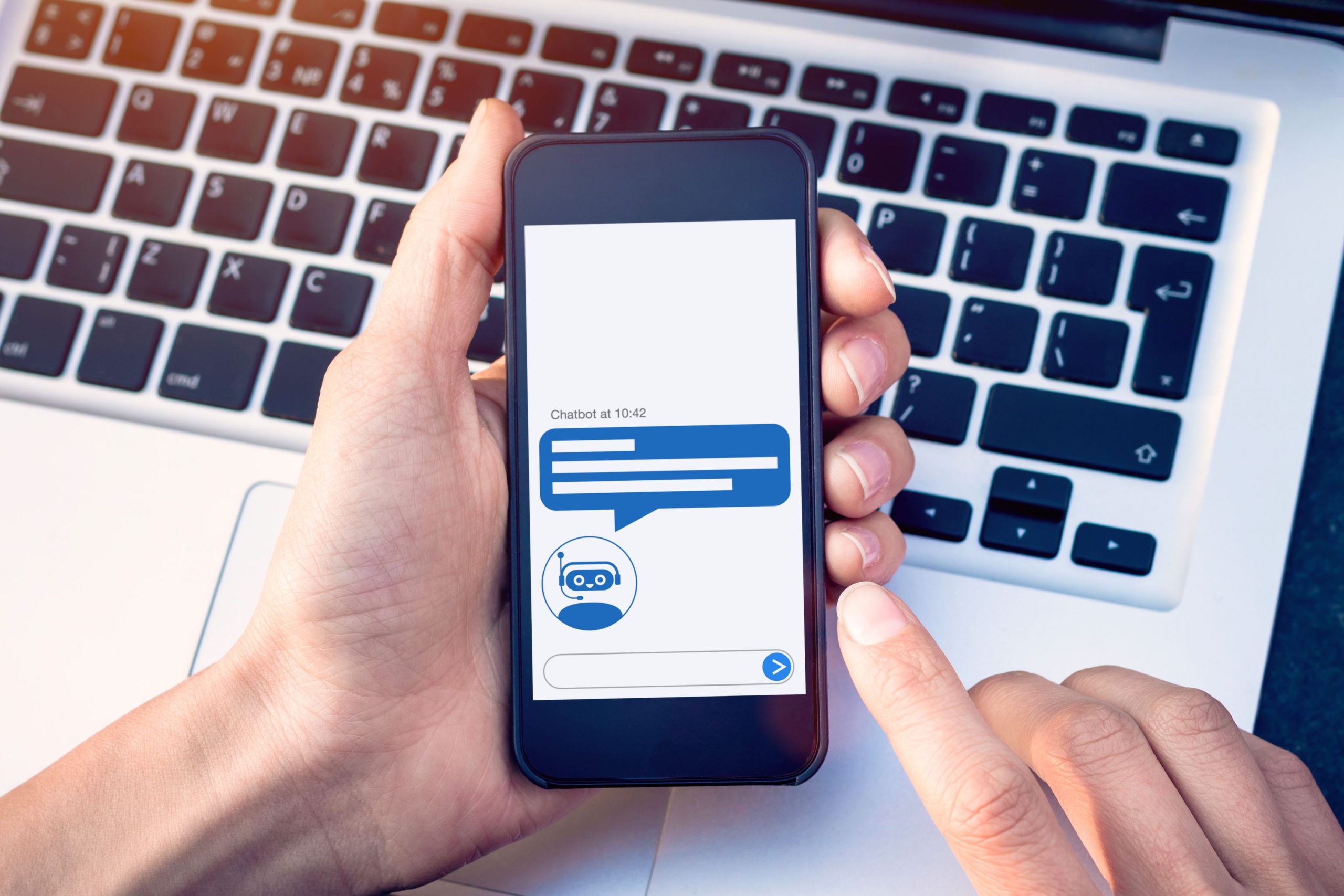

Technology is advancing at a dizzying pace. Innovative solutions are simplifying more and more areas of our daily lives. Interacting with them has become as natural as chatting with a colleague at work, especially when it comes to chatbots.
Chatbots have a wide range of applications and can be tailored to the needs of any industry. They assist in various areas, including customer service, education, healthcare, and entertainment. Conversing with a computer, once a concept straight out of science fiction, has now become a part of our everyday reality.
Contents
What are chatbots?
Chatbots are computer programs designed to simulate conversation with human users. They are becoming increasingly adept at it! Leveraging artificial intelligence and natural language processing (NLP) technology, they mimic human interactions. A distinctive feature of chatbots is their availability; they are always ready to operate, regardless of the time of the day.
The primary function of chatbots is to provide quick assistance whenever a user needs to make contact. Other significant functions include:
- answering frequently asked questions (FAQs),
- personalising product recommendations,
- facilitating reservations and purchases,
- automating tasks,
- gathering data and offering analysis.
The history of chatbots
The history of chatbots can be traced back to the 1960s. A notable milestone was the creation of one of the first chatbots, ELIZA, by Joseph Weizenbaum, a professor at MIT.
ELIZA was groundbreaking in its ability to simulate conversation. The program mimicked a psychoanalyst, analysing patterns in sentences and constructing questions by rearranging words. This simple mechanism created the illusion that the machine “understood” the person it was conversing with. For instance, in response to the statement “I feel sad”, ELIZA could reply, “Why do you feel sad?” This early innovation laid the foundation for the sophisticated chatbots we use today.
In the 1980s and 1990s, chatbot technology developed gradually. A noteworthy example from this era was ALICE (Artificial Linguistic Internet Computer Entity), created by Richard Wallace in 1995. ALICE, an advanced version of ELIZA, won the Loebner Prize three times. Early chatbots mainly relied on “scripts” – sets of predefined responses to specific questions.
In modern times, the real revolution in the world of chatbots began with the development of artificial intelligence and machine learning. These technologies enabled chatbots to learn and conduct conversations more naturally.
A significant milestone was the debut of IBM Watson in 2011. After defeating human contestants in the quiz show Jeopardy!, Watson gained fame, demonstrating that machines could successfully process and interpret natural languages. Watson won $77,147, which was later donated to charity.
Another important milestone was the development of voice assistants: Apple’s Siri (introduced in 2011), Google Assistant (2016), and Amazon Alexa (2014). These systems contributed to the increased popularity of chatbots. Thanks to artificial intelligence, those tools learn from their interactions, making conversations with them more helpful.



AI chatbot in human conversation
Chatbots are revolutionising online interactions and setting new trends in human-technology relationships. They enable faster task execution, supporting businesses and individuals. Gradually, they are no longer considered cold and impersonal technology. They bring an element of understanding and, one might say, personality to communication.
These programs quickly learn our preferences, adapt to our needs, and provide personalised solutions. They are changing the perception of customer service and e-commerce, offering a true “one-to-one” experience on a mass scale.
To understand how chatbots work, find out more about machine learning and natural language processing.
Machine Learning (ML)
Machine learning allows machines to learn from their experience. ML enables them to analyse and interpret language data, which they use to improve their responses. Consequently, the more conversations a chatbot conducts, the more precise its responses will be.
Natural Language Processing (NLP)
Natural language processing, on the other hand, deals with the understanding and interpretation of human language by computers. In practice, this means that a chatbot analyses text input, understands the user’s intentions, and then responds in a way that is natural to humans. NLP allows chatbots to conduct smooth and natural conversations.
Chatbot software: Types
You can encounter two main types of chatbots: rule-based ones and advanced ones based on artificial intelligence.
Rule-based chatbots
Rule-based chatbots operate on an “if-this-then-that” principle. They respond to specific commands or phrases with pre-programmed answers. If a user writes “What are your opening hours?”, the chatbot responds according to a defined rule. These programs are simple to maintain, but have limited flexibility. They struggle with unexpected questions and complex inquiries.
Artificial intelligence-based chatbots
AI-based chatbots, like the previously mentioned systems utilising ML and NLP, conduct complex conversations. They learn from interactions, recognise linguistic subtleties, and tailor their responses to the conversation context. Such chatbots better understand the user’s intentions and provide more accurate responses.



Application of chatbots: Customer service, etc.
Chatbots find wide applications in various fields of life and industries. They are particularly successful in customer service interactions. Companies use them to automate responses to frequently asked questions. This saves time and money while providing customers with quick and satisfactory service.
E-commerce
Chatbots help customers find the right products, track orders, and receive recommendations based on their browsing history. Personalising their experience enhances the consumers’ loyalty. These programs remember user preferences and suggest tailored offers.
Education
Chatbots facilitate learning by providing quick access to information, quizzes, and interactive courses. They assist students in organising study materials, answering course-related questions, or managing class schedules. Educational chatbots are used in language learning apps, where they often take on the role of a conversational teacher.
Health sector
Chatbots offer psychological and health support. They provide information on healthy lifestyles, remind about medical appointments, or monitor patients’ conditions. You can easily find health chatbots specialising in mental support, offering conversations based on therapeutic techniques like CBT (Cognitive Behavioural Therapy).
Entertainment
In gaming, chatbots offer an entirely new dimension of interaction. They become narrators in story-driven games or interactive guides in virtual worlds. A digital assistant significantly enhances engagement in entertainment. In adventure games, a chatbot serves as an interactive character, with whom players converse, solve puzzles, and expand the storyline.
Reservations and planning
In the hotel, restaurant and airline industries, chatbots assist in making bookings, provide information on availability and prices, and also remind customers of upcoming dates. They suggest the possibility of purchasing additional options, such as meals or extra luggage.
Technical support
In IT, chatbots help to resolve simple technical difficulties. They provide operating instructions and direct users to the appropriate resources.
Business management
Chatbots simplify human resource management. They answer employees’ questions about company policies, benefits, leaves, or internal procedures, facilitating communication and operations.
As you can see, chatbots are incredibly versatile. They are continuously evolving, adapting to the needs of various industries and users. The possibilities for their use are limited only by human imagination.
We can expect further innovations in the field of chatbots. The advancement of technology opens new possibilities for these digital assistants. Over time, they will become even more intelligent and understand the context of conversations even better.
One interesting direction is the integration of chatbots with the Internet of Things (IoT) technology. In the future, chatbots could serve as control centres managing smart homes or cities. They will become a vital part of almost every industry.
Chatbots also have the potential for increased integration with augmented reality. They will respond to questions and guide users step by step through complex processes in a virtual world. This integration could transform how we interact with technology.
How do you choose a chatbot?
Selecting the right chatbot significantly streamlines work and business processes. Here are some tips to help you find a tool that suits your needs.
Define the purpose
First, consider what you specifically require the chatbot for. Do you plan to use it for customer service, educational support, healthcare, or entertainment purposes? Your requirements will vary depending on the intended use.
For businesses, the integration with existing CRM systems, response speed, and the ability to handle a large volume of queries is indispensable. In education, the interactive teaching and adapting to individual learning levels of students is what really counts.
Check integration capabilities
A chatbot should integrate with the existing platforms and tools you use. If you run an online store on Shopify, check whether the chatbot easily integrates with this system.
Learning capability
Do you require a simple rule-based chatbot, or an advanced one that uses artificial intelligence? AI chatbots are pricier, but they offer far more capabilities. They learn from user interactions and tailor their responses accordingly.
User interface
The chatbot should be easy for you and other users to operate. Is the interface user-friendly? Does the conversation flow smoothly? Make sure to check this before committing to a paid plan.
Security and privacy
Sensitive areas such as healthcare and wherever personal data is involved require special attention to data protection. Ensure that the chatbot you choose adheres to security standards. Do not compromise your customers’ privacy.
Technical support
Check what kind of customer service and technical support are available. Is there quick assistance for emerging issues? Are regular updates provided for the chatbot?
The best chatbot is one that makes you achieve your goals. Choosing one requires a thorough examination of the available options. A well-matched tool brings significant benefits to you and your users.
Chatbots for mobile apps and websites
Would you like your website or mobile app to be more interactive and user-friendly? Invest in a supportive chatbot that enhances your customer service.
A chatbot assists your customers in almost any situation. It quickly answers their questions and offers help at every stage: from finding product information and guiding them through the purchasing process to providing after-sales support.
While talking about AI tools, we cannot forget about our latest service. You have a text or image created by AI and you want to make sure it is free of mistakes? Use Quick Review in which our proofreaders will check you content’s linguistic and meritorical aspects in a shorther period of time and at a lower cost. Contact us – Skrivanek Translation Agency is here to help you witch any language needs.







